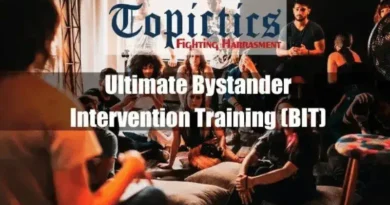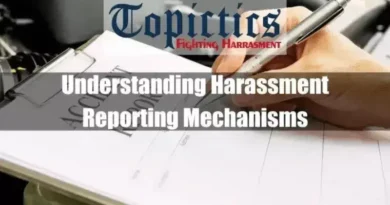How to Create an Anti-Retaliation Policy?
Anti-retaliation policies are essential to protect employees from adverse actions against them for engaging in legally protected activities. These activities often include reporting workplace misconduct, participating in investigations, or raising concerns about safety violations.
An anti-retaliation policy aims to foster a work environment where employees can speak up without fear of repercussions. Such policies are fundamental in maintaining transparency and trust within an organization, ensuring that employees feel safe and supported when they report unethical or illegal behavior.
Legal Implications of Failing to Implement Such a Policy
Failure to implement an anti-retaliation policy can have severe legal repercussions. Under various federal laws, including the Occupational Safety and Health Act (OSHA), the Whistleblower Protection Act, and other anti-discrimination statutes, employers are prohibited from retaliating against employees who exercise their legal rights.
Without a robust policy, organizations risk lawsuits, penalties, and reputational damage. Moreover, companies could be liable for any harm employees suffer due to retaliation, which can lead to significant financial losses and a damaged public image.
Takeaways
| Key Points |
|---|
| An effective anti-retaliation policy is essential for fostering a safe and supportive workplace and should include clear definitions and examples of retaliation, such as termination, demotion, or harassment, ensuring employees understand prohibited behaviors. |
| It must articulate a zero-tolerance stance, emphasizing that retaliation is unacceptable, and communicate this through employee handbooks, training sessions, and regular interactions. |
| Comprehensive reporting mechanisms, including anonymous hotlines and multiple avenues for submitting complaints, help employees feel secure in voicing concerns, while training programs for all employees and managers reinforce the importance of preventing and addressing retaliation. |
| Regular reviews and audits of the policy’s effectiveness, alongside updates to reflect legal changes or feedback, ensure its continued relevance and compliance. |
| Lastly, clear investigation procedures and fair disciplinary actions for offenders demonstrate the organization’s commitment to protecting employees and building trust in its systems. |
Key Elements of an Effective Anti-Retaliation Policy

Clear Definitions and Examples of Retaliation
What Constitutes Retaliation?
Retaliation refers to any adverse action taken by an employer against an employee as a consequence of that employee engaging in a legally protected activity. This can range from subtle actions, such as isolation or changes in work assignments, to more overt actions, like termination or demotion.
An effective anti-retaliation policy should clearly define what constitutes retaliation and state that even seemingly minor retaliatory actions are prohibited.
This clarity helps set expectations and ensure that all employees understand unacceptable behaviors.
Common Examples of Retaliation in the Workplace
Common forms of retaliation include firing, demoting, or laying off employees who report misconduct or safety violations. Other examples might include denying promotions or benefits, reducing work hours, or creating a hostile work environment through intimidation or harassment.
Employers can illustrate what retaliation might look like by providing specific examples within the policy, helping to prevent such actions from occurring.
Zero Tolerance Stance
Importance of Communicating Zero Tolerance
A zero-tolerance stance on retaliation demonstrates an organization’s commitment to protecting its employees. This stance should be communicated clearly and frequently, ensuring all employees understand that retaliation will not be tolerated.
Such a position helps build a culture of trust and accountability, where employees feel secure in reporting issues without fear of reprisal.
Methods for Communicating This Stance to Employees
Organizations should utilize various methods to effectively communicate a zero-tolerance policy, including employee handbooks, regular training sessions, and internal communications like emails or newsletters. It’s also important to reinforce this stance during team meetings and one-on-one interactions with managers.
Employers can help create an environment where employees feel confident exercising their rights by clearly stating that retaliation is unacceptable.
Steps to Develop an Anti-Retaliation Policy

Drafting the Policy
Essential Components to Include in the Policy Document
When drafting an anti-retaliation policy, it is essential to include specific components that outline the organization’s commitment to preventing retaliation. These components should include a statement of purpose, definitions of key terms, examples of prohibited behavior, and a detailed explanation of the policy’s consequences.
Additionally, the policy should outline the process for reporting retaliation and the procedures for investigating and resolving complaints. By including these elements, employers can create a comprehensive policy that addresses all aspects of retaliation prevention.
Legal Considerations and Compliance with Labor Laws
Incorporating legal considerations into the policy is crucial for ensuring compliance with federal and state labor laws. The policy should reference relevant laws, such as OSHA and the Whistleblower Protection Act, and clearly state that retaliation against employees who exercise their legal rights is illegal and will not be tolerated.
It’s advisable to consult with legal experts during the drafting process to ensure the policy meets all legal requirements and is aligned with current regulations.
Involving Stakeholders in Policy Creation
Role of Management, HR, and Legal Teams in Policy Development
Developing an anti-retaliation policy is a collaborative effort that requires input from various organizational stakeholders. Management should lead the initiative, demonstrating their commitment to preventing retaliation.
HR teams play a critical role in drafting the policy, ensuring it is clear, comprehensive, and aligned with organizational goals. Legal teams are essential for reviewing the policy to ensure compliance with all applicable laws and regulations.
By involving these key stakeholders, organizations can create a well-rounded policy that effectively addresses the issue of retaliation.
Importance of Employee Input in Shaping the Policy
Employee input is invaluable when developing an anti-retaliation policy. Employees can provide insights into potential areas of concern and help identify aspects of the workplace culture that may need to be addressed. Engaging employees in the policy creation process helps ensure the policy is relevant and practical and fosters a sense of ownership and commitment to the policy’s success.
This collaborative approach can lead to a more effective policy that resonates with the workforce.
Training and Education

Employee Training Programs
Designing Effective Training Modules
Effective training programs are critical for ensuring that all employees understand the anti-retaliation policy and their rights under it. Training modules should be engaging and informative, covering key policy aspects, such as what constitutes retaliation and how to report it. Training should be interactive, allowing employees to ask questions and participate in discussions to reinforce their understanding.
Employers can create comprehensive training modules to help ensure that all employees know the policy and how to utilize it.
Frequency and Methods of Delivering Training
Training on the anti-retaliation policy should be conducted regularly, with refresher courses offered at least annually. Training can be delivered through various methods, including in-person workshops, online courses, or a combination.
Utilizing different formats helps cater to different learning styles and ensures the training is accessible to all employees. Regular training helps keep the policy at the forefront of the organization’s mind and reinforces its commitment to preventing retaliation.
Managerial Training
Specific Training for Managers on Handling Complaints and Avoiding Retaliatory Behavior
Managers are crucial in preventing retaliation and must receive specialized training to handle complaints effectively. This training should cover how to respond to reports of misconduct, avoid retaliatory behavior, and support employees who come forward with concerns.
Managers should also be trained on the legal implications of retaliation and the consequences of violating the anti-retaliation policy. By equipping managers with the knowledge and skills they need, organizations can help prevent retaliation and ensure that complaints are handled appropriately.
Reinforcement of Training Through Ongoing Education and Communication
Ongoing education and communication are essential for reinforcing the lessons learned in training sessions. Managers should receive regular updates, reminders, and opportunities for continued learning to inform them of any policy changes or legal requirements.
Continuous education helps managers remain vigilant in preventing retaliation and are prepared to address any issues.
Reporting Mechanisms

Creating Safe Reporting Channels
Confidentiality and Anonymity in Reporting
One of the most critical aspects of an anti-retaliation policy is ensuring that employees feel safe when reporting misconduct or unethical behavior. Confidentiality and anonymity are key components in achieving this. Organizations should establish clear procedures that guarantee the protection of whistleblowers’ identities.
This can be done through anonymous hotlines, encrypted online reporting portals, or secure Dropbox. Ensuring confidentiality helps build trust in the reporting system, making employees more likely to report concerns without fear of retribution.
Multiple Avenues for Reporting
To make reporting as accessible as possible, it’s essential to provide multiple avenues for employees to voice their concerns. These avenues include in-person reports to HR or designated managers, anonymous hotlines, secure online portals or third-party reporting services.
Offering various options ensures that employees can choose the method they are most comfortable with, thereby increasing the likelihood of timely and accurate reporting.
Encouraging Whistleblower Activity
Building Trust in the Reporting Process
Building trust in the reporting process is vital for the success of any anti-retaliation policy. Employees need to believe that their concerns will be taken seriously and that appropriate action will be taken. Organizations can build this trust by demonstrating a consistent and transparent approach to handling reports, following through on investigations, and taking corrective action when necessary.
Additionally, communicating the outcomes of investigations (where appropriate) can help reinforce trust and show that the organization is committed to addressing employee issues.
Ensuring Employees Are Aware of Their Rights and Protections
Employees must be fully informed of their rights and protections under the anti-retaliation policy. This information should be communicated during training sessions, included in employee handbooks, and accessible via the company’s internal communication channels.
By ensuring that employees understand their rights, organizations can empower employees to speak up and report concerns without fear of retaliation.
Monitoring and Enforcement

Oversight of the Anti-Retaliation Program
Regular Reviews and Audits of the Policy’s Effectiveness
Regular reviews and audits should be conducted to ensure that the anti-retaliation policy remains effective. These reviews should assess the policy’s implementation, the effectiveness of reporting mechanisms, and the outcomes of any investigations.
Audits can help identify areas for improvement, ensuring that the policy evolves with the organization’s needs and any changes in legal requirements. Regular oversight is crucial in maintaining the integrity of the policy and ensuring that it continues to protect employees.
Mechanisms for Continuous Improvement
Continuous improvement is essential for keeping the anti-retaliation policy-relevant and effective. This can be achieved by incorporating feedback from employees, managers, and other stakeholders. Additionally, staying updated on legal changes and industry best practices can help refine the policy.
By committing to ongoing improvement, organizations can ensure that their anti-retaliation policy remains a robust tool for protecting employees.
Disciplinary Actions for Retaliation
Clear Procedures for Investigating Retaliation Claims
When retaliation is suspected, it is critical to have clear procedures in place for investigating claims. These procedures should outline the steps, from the initial report to the final resolution. Investigations should be conducted promptly and fairly, with impartiality and confidentiality maintained throughout the process.
In some cases, involving a neutral third party or mediator may be necessary to ensure objectivity. Clear procedures help ensure that all reports are handled consistently and transparently.
Steps for Taking Disciplinary Action Against Offenders
Disciplinary actions must be clearly defined within the anti-retaliation policy. Depending on the severity of the offense, these actions could range from reprimands to termination.
By clearly outlining the consequences of retaliatory behavior, organizations can deter such actions and demonstrate their commitment to maintaining a safe and supportive work environment. Disciplinary actions must be applied consistently and fairly to maintain trust in the policy and its enforcement.
Handling Retaliation Claims

Investigation Process
Steps to Conduct a Fair and Thorough Investigation
A fair and thorough investigation is the cornerstone of handling retaliation claims. The process should begin with promptly acknowledging the complaint, followed by an impartial assessment of the facts. Investigators should gather evidence, interview relevant parties, and document all findings meticulously.
The goal is to establish the facts without bias and determine whether retaliation occurred.
Ensuring fairness throughout the investigation process is vital to maintaining the credibility of the anti-retaliation policy.
Involvement of Neutral Third Parties or Mediators
In some cases, involving a neutral third party or mediator can be beneficial, especially if the situation is complex or contentious. A third party can provide an objective perspective, helping to resolve the issue without bias.
Mediators can also facilitate discussions between the involved parties, aiming for a resolution that satisfies both sides. This approach can be particularly useful in maintaining a positive work environment while addressing the root cause of the complaint.
Remediation and Resolution
Corrective Actions and Remedies for Victims
If retaliation is found to have occurred, it is crucial to take corrective actions to remedy the situation. This might involve reinstating the employee to their former position, compensating for lost wages, or other measures that address the harm caused.
The organization should also ensure that such incidents do not happen again, which may involve additional training or policy revisions. Remediation is about correcting the wrong and restoring trust in the organization’s commitment to protecting its employees.
Measures to Prevent Future Retaliation
Preventing future retaliation involves taking proactive steps to address the issues that led to the retaliation in the first place. This could include reinforcing the anti-retaliation policy, providing additional training, or making structural changes to the organization’s reporting and oversight mechanisms.
Continuous monitoring and regular policy reviews can also help identify potential vulnerabilities and address them before they result in further incidents.
Policy Review and Updates

Regular Review Schedule
Frequency of Policy Reviews (e.g., Annually, Bi-Annually)
To maintain the effectiveness of the anti-retaliation policy, it should be reviewed regularly, at least annually or bi-annually. This ensures that the policy remains aligned with current laws and best practices.
Regular reviews also allow the organization to assess the policy’s performance and make necessary adjustments based on the findings. A scheduled review process helps keep the policy-relevant and ensures that it continues to protect employees effectively.
Criteria for Updating the Policy Based on Legal Changes or Organizational Needs
Legal changes or shifts in organizational needs may necessitate updates to the anti-retaliation policy. It’s important to stay informed about any changes in labor laws or industry regulations that could impact the policy.
Additionally, employee feedback or incidents of retaliation may highlight areas where the policy could be strengthened. By incorporating these updates, organizations can ensure that their policy remains effective and compliant with all legal requirements.
Employee Feedback and Policy Adjustments
Incorporating Employee Feedback into Policy Revisions
Employee feedback is a valuable resource for improving the anti-retaliation policy. Regular surveys, focus groups, or direct feedback mechanisms can provide insights into how the policy is perceived and where improvements might be needed.
By incorporating employee input into policy revisions, organizations can create a policy that resonates with the workforce and effectively addresses their concerns.
This approach improves the policy and fosters a culture of inclusivity and transparency.
Continuous Communication with Employees About Policy Updates
It is essential to keep employees informed about any updates to the anti-retaliation policy. Regular communication, through newsletters, emails, or team meetings, ensures that everyone knows the latest changes and understands how they impact their rights and responsibilities.
Continuous communication helps reinforce the importance of the policy and encourages employees to remain engaged in its implementation.
Conclusion
Creating and maintaining an anti-retaliation policy is not just about compliance with legal requirements; it is about fostering a workplace culture that values transparency, trust, and employee well-being.
By carefully developing, implementing, and regularly reviewing an anti-retaliation policy, organizations can protect their employees from retaliation and create a positive work environment where everyone feels safe to speak up.
This proactive approach benefits not only the employees but also the organization as a whole, leading to greater engagement, productivity, and overall success.









